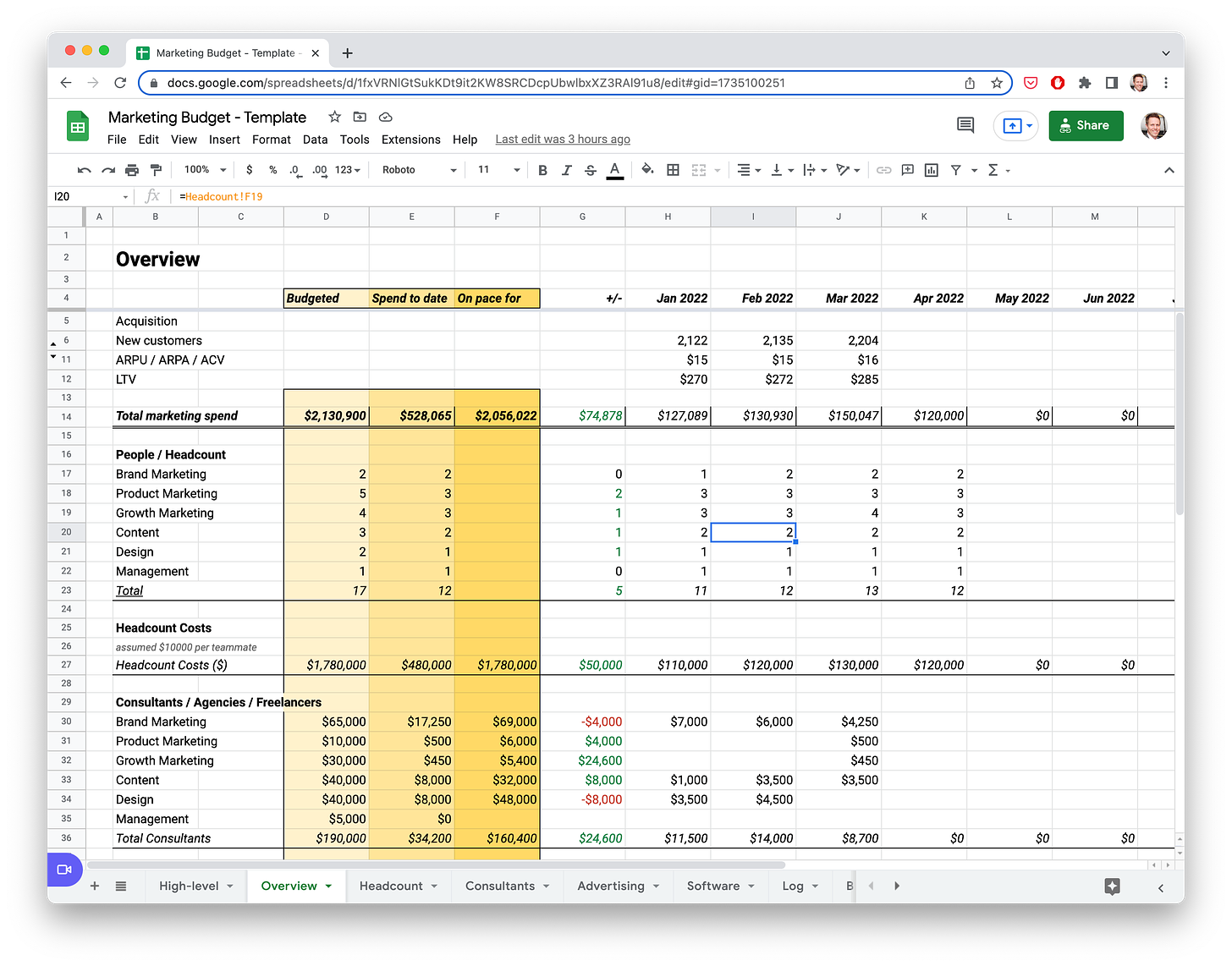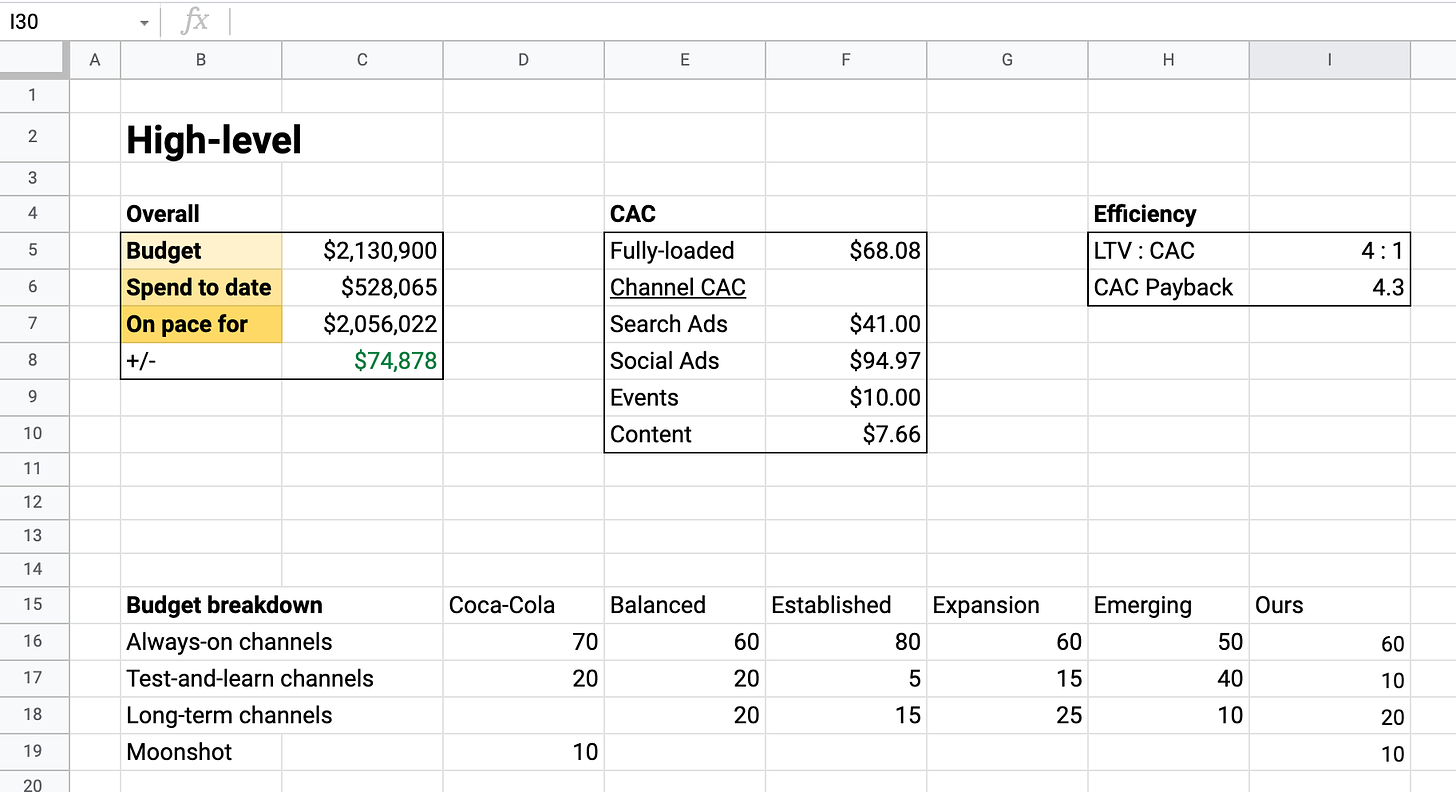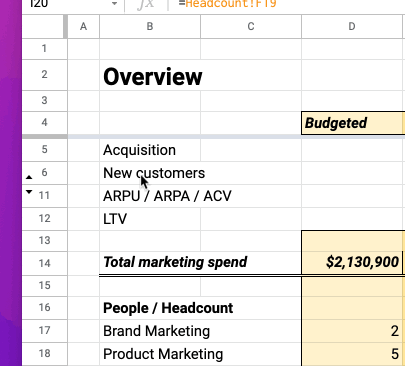315. Budgeting, Part 2 [Free Budget Template] 💯
See how to run a marketing budget + grab a free template
Hi there 👋
I did something a little different last week, breaking a newsletter topic into a two-week series, like Bridgerton but shorter and less dramatic. The topic is budgeting, which is not the most scintillating of topics unless maybe you went to school for accounting. (Fun fact: I started off as an accounting major at college.)
In case you missed Part One, see the link below. Part Two includes the much-loved freebie of a budget template that you can use for your marketing team. Enjoy!
Wishing you a great week,
Kevan
(ᵔᴥᵔ)
Thank you for being part of this newsletter. Each week, I share playbooks, case studies, stories, and links from inside the startup marketing world and my time at Oyster, Buffer, and more.
Say hi anytime at hello@kevanlee.com. I’d love to hear from you.
How to Maintain a Marketing Budget (w/ free template)
There comes a time in every young startup’s life when growth, growth, growth finds balance with efficiency, costs, and cash.
At Buffer, this happened soon after our Series A fundraise and was a key part of our overall strategy of reaching sustainable growth and profitability. (Not every startup will aim for profitability after a Series A raise, by the way.) I spent several years tracking marketing costs very closely and reconciling with our finance team every month.
At Oyster, we are still less than two years old, which is quite young for a startup. But at the same time, we have raised a Series B, which is a big milestone. We’re introducing a bigger and bigger focus on efficiency, so I’ve had the chance to dust off some of my Buffer budget know-how.
If budgets are relevant to you at this stage of your company’s journey, great! I have a template for you.
If budgets aren’t on your radar yet, they will be! I have a template for you, too. (Same template.)
Here’s a free budget template you can use to track your marketing spend.
Visit the link. Go to File → Make a Copy. It’s all yours :)
Let me explain a bit more how each tab works.
High-level tab
This tab contains a view into your pacing for budget overall, plus a look at CAC and efficiency.
All cells on this tab use data pulled from other tabs. So in theory you shouldn’t have to ever touch this tab unless something looks broken.
Overview tab
The overview tab pulls in spend data from your main categories of marketing spend:
Headcount
Consultants / Agencies / Freelancers
Advertising
Software
Misc.
Most of the work on this tab will be done automatically through formulas. But there is one section that requires a manual update. You’ll need to input the acquisition data each month into the top of this tab: New customers, ARPU / ARPA / ACV, and LTV.
When you’re inputting the acquisition data, you can click to expand the hidden rows so you can include channel-specific acquisition. This will filter directly back to your Channel CAC on the High-Level tab. The template includes channels for paid search, paid social, events, and content, but it’s likely your top channels will differ.
Other items worth noting:
For headcount costs, I’ve assumed a $10,000 per month cost per teammate, which is equivalent to an average of $120,000 in salary. If your team is more or less, feel free to update the cell formulas accordingly.
You’ll also see in this overview that I’ve pulled forward two specific line items from the software budget: HubSpot and CustomerIO. You can choose to pull forward whichever tools you like. If I have expenses that represent an outsized portion of a budget line item, I like to have visibility into that spend at this Overview level.
Headcount tab
The headcount tab works a little different than other tabs because the top half of the sheet is counting heads, not dollars. This is where you can input your headcount planning: who you want to hire into which teams and when.
I like to keep a log below this headcount plan with the names and start dates of each teammate so I can quickly refer to it when needed.
Consultants tab
Pretty self-explanatory, I’d imagine. The one nuance here is that I’ve also broken out this budget by team further below in the sheet. This can be useful for a Channel CAC calculation for an area like content, for instance, where incremental growth of the channel is tied to output from an agency or contractor.
It’s also valuable to list the renewal date here so that you can plan ahead on when you’re committing future spend to a specific contractor again.
Advertising tab
Another self-explanatory tab, I think. Your channels may be much more robust than is listed here, so feel free to add rows and budget lines as needed.
The formulas also work in such a way that leftover budget gets carried over month-to-month.
Software tab
I find it useful to categorize software expenses by the duration of the spend, whether we’re on an annual contract (and when that contract renews), month-to-month, or a one-time purchase. Beyond that, this sheet is pretty straightforward.
Log tab
This is where all the other expenses go that don’t fall into the above category. In a perfect world, the finance team will send you a readout from NetSuite or Quickbooks with all the expenses from your department. I like to match this Log to the format of that readout, then I’ll use the category and date filters to see which spend I need to account for on the Overview tab. This tends to be the most manual process for my budget since a lot of the miscellaneous expenses here are one-off spend like an event sponsorship or a learning and development purchase.
Over to you
Do you use a budget with your marketing team?
How could I improve on this budget template?
Your thoughts and comments would be most helpful! And if you end up giving this template a go, please do let me know how it works for you.
Misc.
Three theories for why you have no time
Oxford Business School study on the ideal media mix.
The headline finding was that no single combination of media channels delivered against every metric, and in fact a spray-and-pray approach (advertising on every channel except TV) proved one of the worst strategies.
Sustainable CX: The Journey to Creating Sustainable, Inclusive, Lasting Business Growth
About this newsletter …
Hi, I’m Kevan, a marketing exec based in Boise, Idaho, who specializes in startup marketing and brand-building. I currently lead the marketing team at Oyster (we’re hiring!). I previously built brands at Buffer, Vox, and Polly. Each week, I share playbooks, case studies, stories, and links from inside the startup marketing world. Not yet subscribed? No worries. You can check out the archive, or sign up below:
Thank you for being here! 🙇♂️
I’m lucky to count folks from great brands like these (and many more) as part of this newsletter community.







